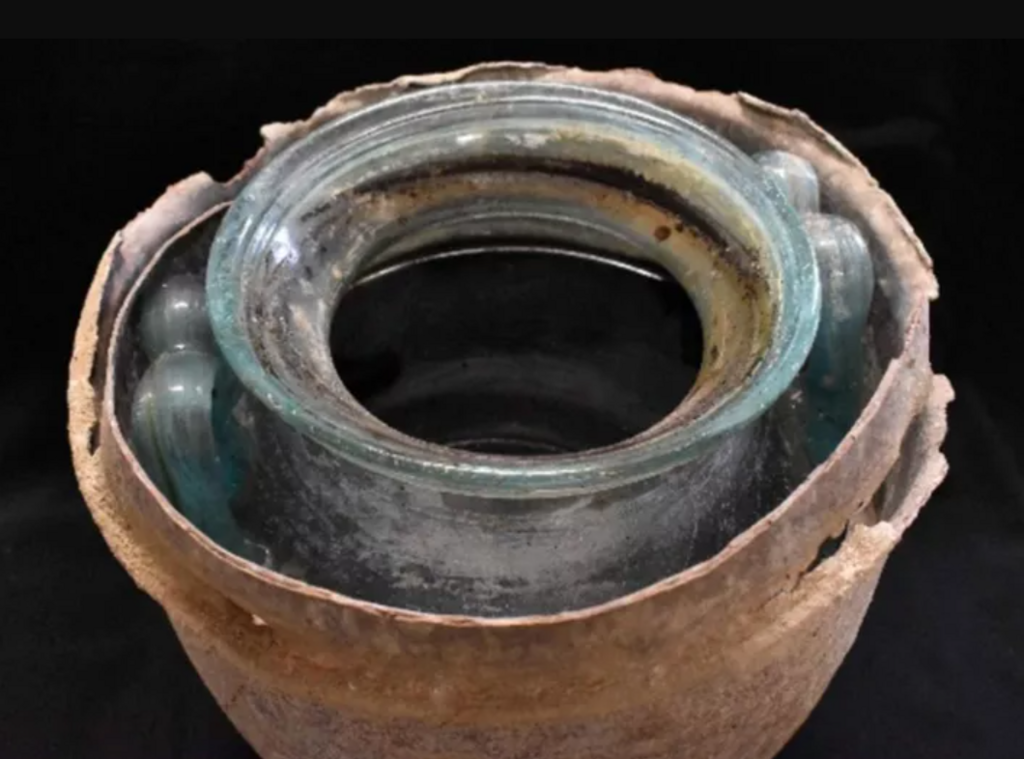A team led by Prof. José Rafael Ruiz Arrebola discovered the oldest known liquid wine, over 2,000 years old, in a well-preserved Roman circular mausoleum tomb from the first century CE near Carmona, southern Spain.
The tomb contained two glass funerary urns with cremated bones, including those of a Roman man named Senicio, immersed in a red-tinged liquid identified as white wine that had reddened over centuries due to chemical reactions and the presence of cremated remains.
1 View gallery


Worlds Oldest Wine discovered in an urn
(PHOTO: JUAN MANUEL ROMAN/ JOURNAL OF ARCHAEOLOGICAL SCIENCE)
The tomb held various urns with bones and offerings, including rings, jars, bowls, a crystal bottle, and other items, suggesting Roman funerary rituals and the practice of accompanying the dead with possessions for the afterlife.
One urn in Niche 8 held an oval lead box with a flat-domed lid containing a glass ossuary pot with five liters of reddish liquid and cremated bone remains.
The mineral profile of the wine is similar to sherry wines from Jerez and several fino wines.
The wine's preservation for 2,000 years was due to the well-sealed conditions of the tomb, setting a new archaeological world record as the oldest liquid wine ever found in its original state, superseding the Speyer wine bottle dated between 325 and 350 AD.
The circular mausoleum belonged to a wealthy family near an important road connecting Carmo with Hispalis (Seville). In Western Andalusia, Carmona was an important municipality under Roman domination and retained the largest and best-preserved necropolis on the Iberian Peninsula.
Scientists used ICP-MS and HPLC-MS to identify the chemical components of the wine's mineral salts and polyphenols, respectively. The absence of syringic acid suggested the wine was originally white.
One urn contained a woman's remains, including amber jewels, perfume, and fabric remains, showcasing gender divisions in Roman society's funerary rituals.
Wine was commonly used in Roman funeral rituals, suggesting the urn was filled with wine during burial ceremonies to aid the deceased in their transition to the afterlife. The wine was immersed with a man's remains, reflecting ancient Roman customs of burying items with loved ones for the afterlife.
Carmona, known as Carmo in antiquity, is part of the Baetica region, a key province of the Roman Empire. The findings were published in the Journal of Archaeological Science: Reports.
Romans used additives like gypsum, cooked musts, and sodium chloride to preserve wine.
This article was written in collaboration with Generative AI news company Alchemiq
Sources: popsci.com, gizmodo.com, english.elpais.com, lavanguardia.com, allthatsinteresting.com, itv.com, gbnews.com, tapasmagazine.es, metro.co.uk, arkeonews.net, labrujulaverde.com

